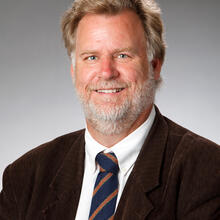We usually focus on the Visitation (Luke 1:39-56) due to the extraordinary meeting not only between Elizabeth and Mary, but between Jesus and John, both still in the womb. It is a nascent meeting of the key players in the culmination of salvation-history. Yet, it is also important to see this at the most ordinary of levels, to see the means by which the one who made straight the Way and the Messiah himself were brought into this world, that is, by means of the Mothers who loved them. In our book on children, Cornelia Horn and I spent some time reflecting on the ordinariness of the meeting between Mary and Elizabeth and the fact that it was through the lives of these two women, meeting to support each other, that John the Baptist and Jesus, the Christ, were brought into this world. We wrote in chapter three of “Let the Little Children Come to Me":
“The infancy narrative in Luke presents us with two motifs, which appear regularly in the Old Testament: that of the barren woman and that of the joy of children. These two themes are inextricably linked. In addition, we find as a minor theme that of Mary’s journey to Elizabeth, the visit of two pregnant women with one another. Theologically the inclusion of this scene is intended to tie Jesus to John the Baptist. Yet through Mary’s joy at the news of Elizabeth’s pregnancy, the scene takes as its base the reality of the extended family in first-century Judaism. Elizabeth’s miraculous pregnancy in her old age, mimicking that of the matriarchs of old, takes away her “reproach” or “disgrace” (oneidos: Luke 1:25), for now she, too, will have a child. The annunciation to Mary of her own miraculous conception includes the news of Elizabeth’s pregnancy (Luke 1:37). The miraculous nature of these pregnancies is not our concern here, for at its heart Judaism considered pregnancy as an act of God (Gen 4:1). In some cases God’s activity was especially apparent for Jews and Christians (Luke 1:37). Two details in this story provide us with clues as to the value of children and its joy for the family. First, Luke tells us that Mary stayed with Elizabeth for three months before she returned home (Luke 1:56). Independent of whether one considers this an historical event, it indicates the reality that pregnancy was a shared experience, at least by women in a family. Luke might include it precisely because such a practice would resonate with his readers. It precedes the notice in Luke 1:57-58 of the birth and the subsequent celebration (synchairon aute, “rejoicing with her”) of her neighbors (perioikoi, “those who lived near her”) and her relatives (syngeneis). Such joy was at the heart of any birth, for the parents and the family as a whole. We cannot overlook some of the basic reasons for this joy: both the child and the mother survived the birthing process.”
For John and Jesus to enter into human history, to play the roles necessary for us, they needed loving mothers, who supported each other in their pregnancies, and who rejoiced with the gift of life, which they were given to bring to fruition, as so many mothers before and after them. It is itself a moment, a time, of great joy.
John W. Martens
Follow me on Twitter @johnwmartens







